What if your healthcare provider is always just a text message away? No more scheduling appointments, waiting in crowded waiting rooms, or worrying about missing a crucial check-in. Yeah, that is possible future is already here, thanks to text messaging for healthcare using the revolutionary technology of EHR-integrated SMS text remote patient monitoring platforms.
But what exactly does this mean? And how can it benefit you as a patient? Let’s dive in and explore the exciting possibilities that this innovative approach to healthcare offers.
1. Building Stronger Patient Relationships
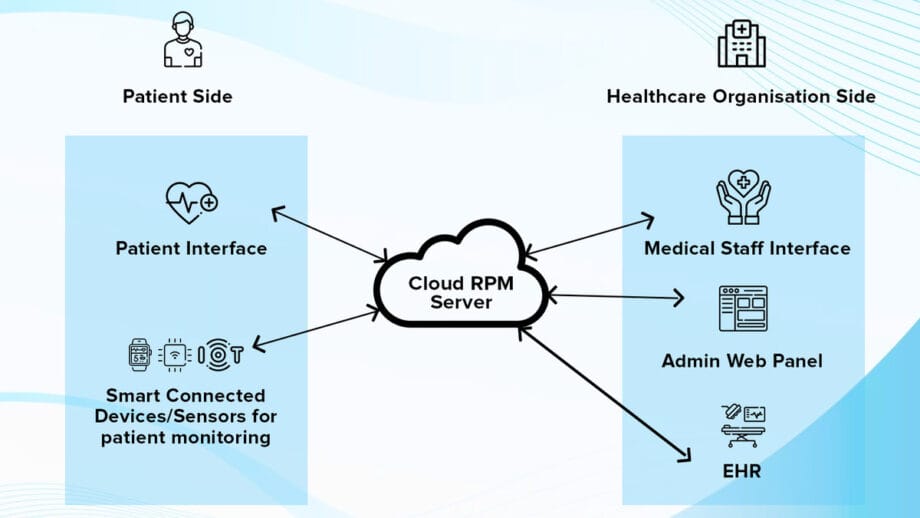
Proactive Care
Imagine a patient with diabetes. Using an EHR-integrated SMS text platform, the patient can receive daily reminders to check their blood sugar levels. If the readings consistently show high levels, the healthcare provider can intervene promptly by adjusting the patient’s medication or providing additional guidance to prevent complications like diabetic ketoacidosis.
Improved Adherence
A patient with high blood pressure is prescribed a daily medication. With an SMS reminder system, the patient receives a text message at the same time each day to prompt them to take their medication. That type of consistent reminder, facilitated through well-designed SMS templates, can help ensure that the patient doesn’t forget to take their medication, which leads to better blood pressure control and reduced risk of heart attack or stroke.
2. Driving Healthier Outcomes

Reduced Hospitalizations
A patient with congestive heart failure is monitored at home using an EHR-integrated SMS text platform. The platform tracks the patient’s weight, blood pressure, and heart rate daily. If the patient’s weight starts to increase significantly, indicating fluid retention, the healthcare provider can intervene early by adjusting the patient’s medication or recommending dietary changes that prevent the patient’s condition from deteriorating to the point where hospitalization is necessary.

Faster Recovery
A patient undergoes surgery to replace a hip joint. Post-surgery, the patient is monitored at home using a remote patient monitoring platform. The platform tracks the patient’s vital signs, pain levels, and mobility. If the patient experiences increased pain or swelling, By addressing these issues promptly with healthcare tech tools, the healthcare provider can adjust the patient’s pain medication or recommend physical therapy sessions, and the patient can recover more quickly and return to their normal activities.
3. Seamless Care Coordination

Real-time Updates
A patient with diabetes is using a continuous glucose monitoring (CGM) system that is integrated with their EHR. The healthcare provider can access the patient’s real-time glucose readings through the EHR. If the patient’s blood sugar levels start to drop rapidly, the provider can immediately contact the patient to provide guidance or adjust their medication that type of real-time data allows for more timely interventions and prevents serious complications.
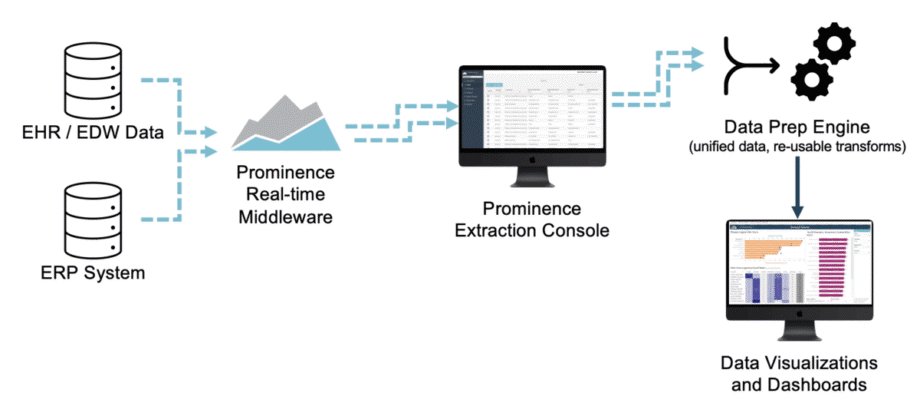
Improved Communication
A patient is discharged from the hospital after a procedure. The healthcare provider can use SMS to send reminders about follow-up appointments, medication instructions, or important health information. The patient can also use SMS to ask questions or report any concerns directly to the provider. In that way, open communication channels can help ensure that the patient receives the necessary care and support after leaving the hospital.
4. Streamlining Healthcare Operations
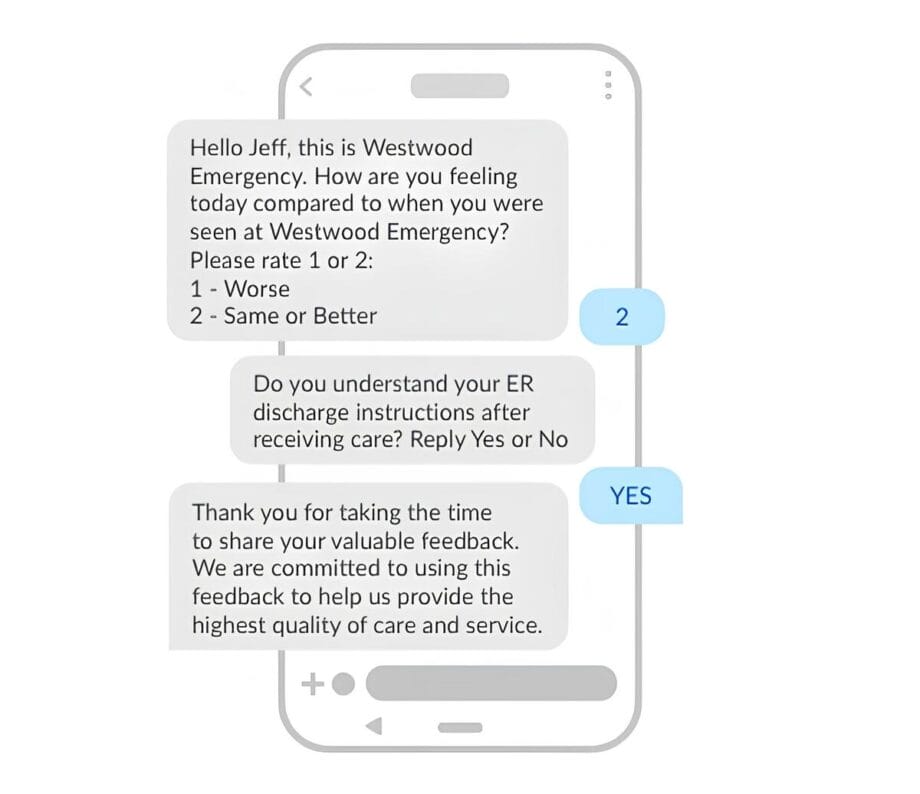
Reduced Administrative Burden
A healthcare provider is using an EHR-integrated SMS text platform to monitor patients with chronic conditions. The platform automatically collects patient data, such as blood pressure readings or glucose levels, and sends it directly to the provider’s EHR which ultimately eliminates the need for manual data entry and reduces the administrative burden on the healthcare provider as well as allowing them to focus more on patient care.
Lower Healthcare Costs
A patient with congestive heart failure is monitored at home using healthcare technology like a remote patient monitoring platform. By detecting and addressing potential complications early on, the platform can help prevent unnecessary hospital admissions, which are expensive and can lead to further health complications. The reduced need for hospitalization can contribute to lower overall healthcare costs for both the patient and the healthcare system.
5. Expanding Healthcare Reach
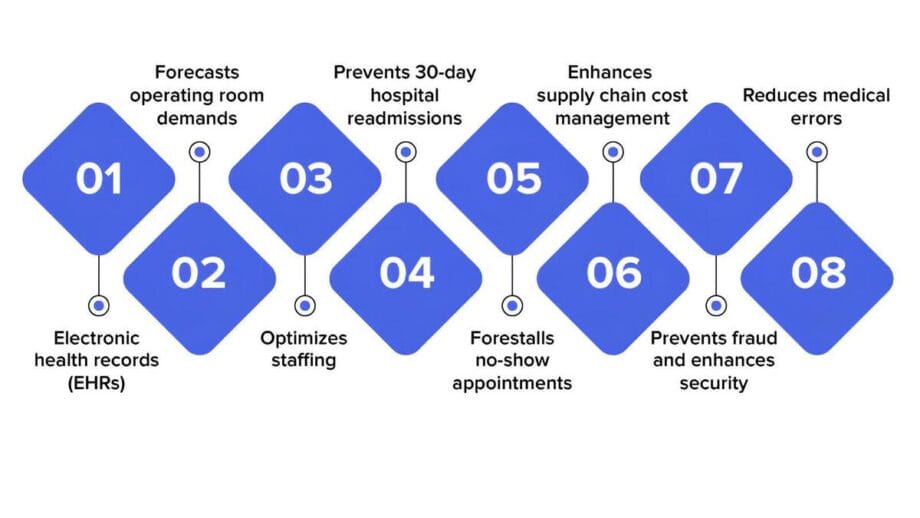
Remote Monitoring
A patient living in a rural area with limited access to healthcare providers is using a remote patient monitoring platform to manage their chronic condition. The platform allows the patient to connect with their healthcare provider through video calls or SMS, receiving regular check-ins and guidance that eliminates the need for the patient to travel long distances to see a doctor as well as make healthcare more accessible and convenient.
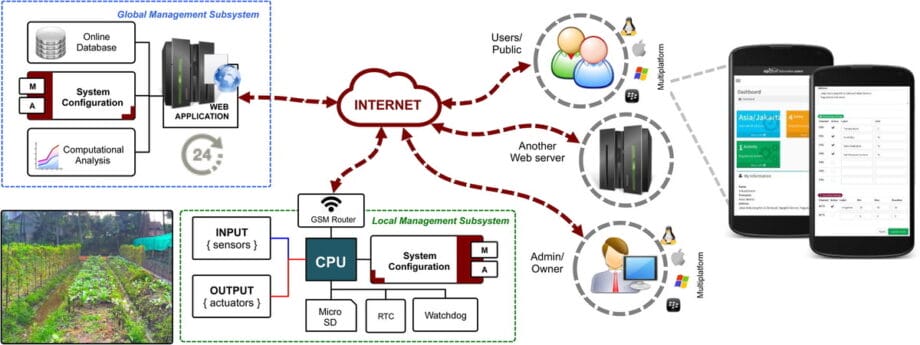
Reduced Wait Times
A patient with diabetes is using a continuous glucose monitoring (CGM) system that is integrated with their EHR. If the patient’s blood sugar levels start to drop rapidly then the healthcare provider can intervene immediately through remote monitoring and providing guidance or adjusting the patient’s medication. This type of proactive approach can prevent the patient from needing to go to the emergency room for treatment reducing wait times and improving patient outcomes.
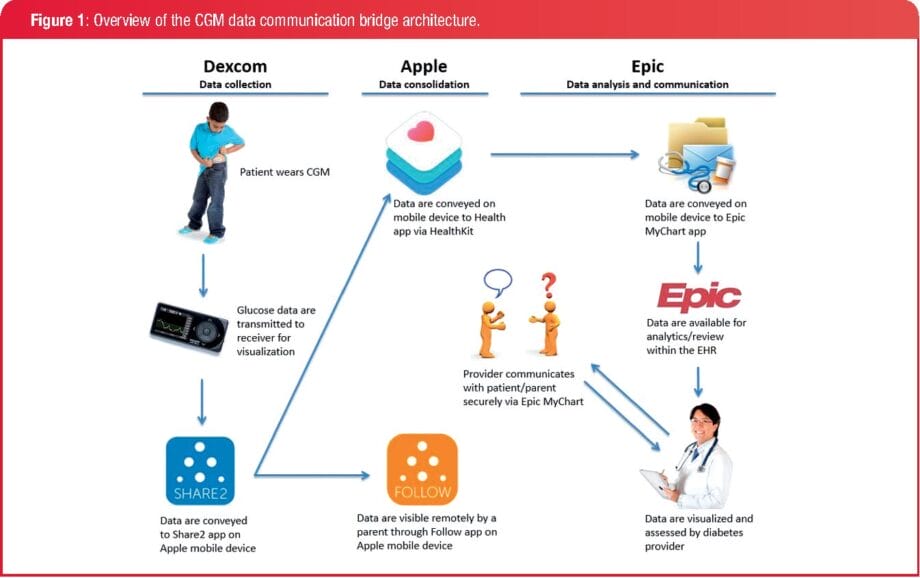
6. Making Data-Informed Healthcare Decisions
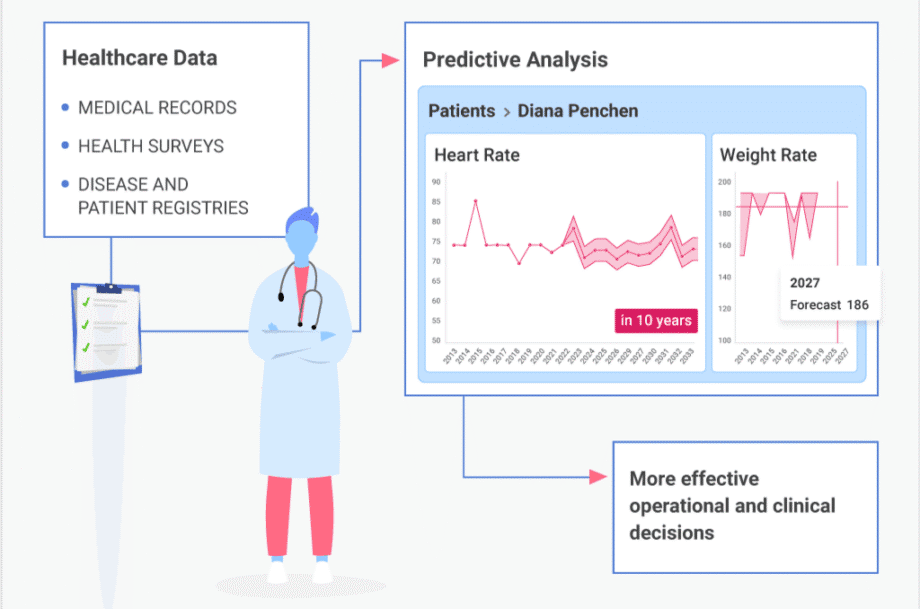
Predictive Analytics for Patient Risk Stratification
A healthcare provider uses an EHR-integrated SMS text platform to collect patient data, such as vital signs, medication adherence, and symptom reports. By analyzing this data using predictive analytics, the provider can identify patients at high risk for complications or hospitalization that allow him for proactive interventions like increasing the frequency of check-ins or adjusting treatment plans, to prevent adverse events.
Personalized Treatment Plans Based on Patient Data
A patient with chronic obstructive pulmonary disease (COPD) is using a remote patient monitoring platform to track their lung function, symptom severity, and medication adherence. By analyzing this data, the healthcare provider can tailor the patient’s treatment plan to their individual needs adjust the dosage of medications, or recommend specific breathing exercises based on their current condition.
Population Health Management
A healthcare system uses an EHR-integrated SMS text platform to collect data from a large population of patients with diabetes. By analyzing this data, the system can identify trends and patterns in disease management, such as areas where patients are struggling with medication adherence or experiencing high rates of complications. This information can be used to implement targeted interventions like educational campaigns or community-based programs, to improve the overall health of the population.
How to Choose the Right EHR-Integrated SMS Text Remote Patient Monitoring Platform?
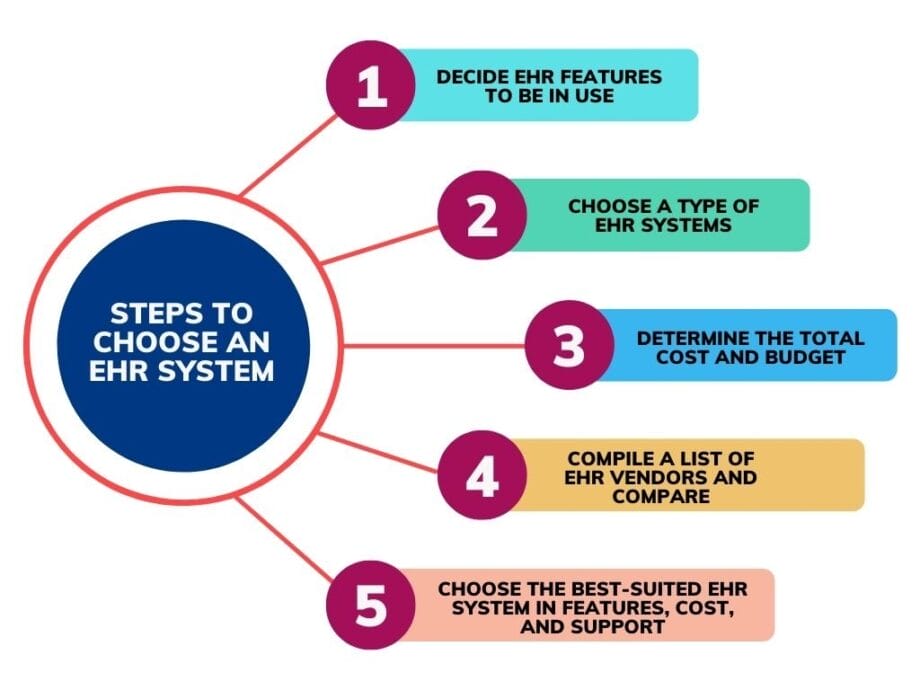
Choosing the right EHR-integrated SMS text remote patient monitoring platform is crucial for effective patient care and engagement. Here are some key factors to consider:
1. Identify Your Needs
A cardiology clinic might need a platform to monitor blood pressure, heart rate, and weight for post-operative patients. A pediatric clinic might focus on asthma management or tracking glucose levels for diabetic children. Start by identifying what health data you need to track (vital signs, symptoms, medication adherence) and how often you need updates from patients.
Why it matters: Different remote patient monitoring (RPM) platforms offer varying features. If you don’t know what you need, you might end up with unnecessary features or, worse, missing key functionality.
2. Check EHR Integration
Let’s say you’re using Epic as your EHR system. Ensure the SMS RPM platform you choose can integrate with Epic so patient data collected remotely (e.g., glucose levels sent via SMS) is automatically updated in the patient’s electronic health records.
Why it matters: Seamless integration reduces manual data entry, and errors, and ensures that your team has up-to-date patient information. Without EHR integration, staff may have to manually update records, which is time-consuming and prone to errors.
3. Evaluate SMS Text Features
Suppose your clinic handles elderly patients who need daily reminders to take medication. The SMS text feature should allow automated reminders, like, “Hi [Patient Name], it’s time to take your medication at 8 AM.” Moreover, the platform should let patients respond if needed (e.g., “Yes, I’ve taken my meds” or “I missed it today”).
Why it matters: Effective communication is critical for patient adherence. A good SMS feature can allow two-way communication for queries and updates, offering patients a convenient way to stay on track with their care.
4. Assess Compliance
In the U.S., healthcare organizations must comply with HIPAA regulations. If a platform isn’t HIPAA-compliant, sending patient data via SMS can expose you to data breaches and hefty fines. Check for compliance certifications and security features like encryption.
Why it matters: Compliance ensures that the platform protects patient information, and failure to comply can lead to legal issues and loss of trust from patients.
5. Consider Usability
If you work at a large clinic, you want a platform that even non-tech-savvy users can navigate. Let’s say you choose a platform where both healthcare providers and patients can log in. If a patient finds it difficult to check their readings or set reminders, they’re less likely to engage with their care.
Why it matters: Usability affects both staff and patients. A complex or confusing platform can lead to frustration, reducing its effectiveness and increasing the workload on your staff.
6. Review Support and Training
A small family practice may not have an IT department. If you encounter a technical issue, will the platform’s support team be available to help you quickly? For instance, if there’s an issue with SMS reminders not sending correctly, you’ll want to know there’s reliable customer support to resolve it.
Why it matters: No matter how well-designed the platform is, there will be times when your team needs help. Whether it’s setting up new features, troubleshooting, or updating the system, having access to strong support and training can make a big difference.
7. Analyze Costs
Say you’re comparing two platforms: one offers a subscription model of $500/month with unlimited SMS messages, while another charges per message. If you plan to send 1000+ messages monthly, the per-message model might be more expensive in the long run. Also, factor in hidden costs like training fees or integration expenses.
Why it matters: You need a platform that fits your budget without sacrificing the features you need. Overpaying for features you won’t use, or being surprised by hidden costs, can strain your budget.
8. Seek User Feedback
A mental health clinic could look for feedback from similar-sized clinics using the same platform. Reading reviews like “Easy to integrate with our EHR system, but SMS response times lagged” can highlight potential advantages or pitfalls. You can also directly ask for feedback from other providers in your network.
Why it matters: User feedback helps you avoid common issues and discover features that may not be obvious at first glance. It’s a way to benefit from the experience of others who have already used the platform.
9. Test the Platform
Before committing to a one-year contract, request a trial period. For example, if you’re monitoring diabetes patients, test the platform for a few weeks to see if it tracks glucose levels, sends reminders, and integrates with your EHR seamlessly. This lets you see how it works in real time.
Why it matters: A demo or trial helps you verify if the platform meets your needs before making a financial commitment. Testing its functionality ensures that the platform works as advertised and integrates well into your practice.
Conclusion

In conclusion, an EHR-integrated SMS text remote patient monitoring platform is a valuable tool for modern healthcare. By leveraging tech innovations to improve patient engagement, care coordination, and data accuracy, these platforms can help drive better health outcomes and enhance the overall patient experience.





